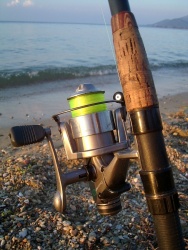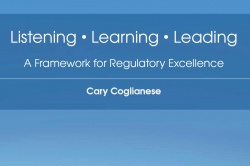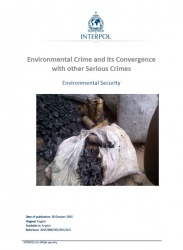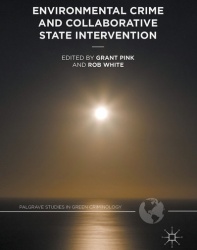
Search archive
e-Monitoring Technology
25/11/2015

A practice involving new technology has caught our attention – the Australian Fisheries Management Authority (AFMA), an Australian Government agency responsible for the efficient management and sustainable use of Commonwealth fish resources, has implemented electronic management technology (e-Monitoring) to improve fisheries management practices.
e-Monitoring allows for greater insight into fishing operations, including the state of fish stocks and the impacts of fishing on the marine environment. It also allows for fishers to demonstrate that they are following the necessary fisheries management arrangements.
This system is another great example of how technology, through the use ofvideo cameras and sensors capable of monitoring and recording fishing activities, allows for better environmental outcomes. For more information about AFMA’s e-monitoring program, visit www.afma.gov.au.
AFMA is also a member of the AELERT network.
AELERT Achievement Award Recipients
18/11/2015

The AELERT Achievement Awards were presented at the AELERT conference in Brisbane. For those of you who weren’t there, please join us in congratulating our winners.
 The first award for ‘Achievement in the Regulatory Profession’ was presented to Kevin Rowley, EPA SA’s Team Leader and ERT Coordinator, Investigations and Tactical Support. Kevin was recognised for his outstanding work in establishing the South Australian Investigation Managers Network Forum and his leadership in facilitating the national AELERT Emergency Operations Network. Kevin is the Vice Chair of the Emergency Operations Network, and is working on creating national competencies in training and procedures for environmental emergency responders. He is also a member of our Capacity Building Cluster and Operations Cluster.
The first award for ‘Achievement in the Regulatory Profession’ was presented to Kevin Rowley, EPA SA’s Team Leader and ERT Coordinator, Investigations and Tactical Support. Kevin was recognised for his outstanding work in establishing the South Australian Investigation Managers Network Forum and his leadership in facilitating the national AELERT Emergency Operations Network. Kevin is the Vice Chair of the Emergency Operations Network, and is working on creating national competencies in training and procedures for environmental emergency responders. He is also a member of our Capacity Building Cluster and Operations Cluster.
 The second award for ‘Achievement in Building the Regulatory Craft’ was presented to Amiette Wakenshaw, who leads the NSW EPA’s training unit. Amiette has made a significant contribution to the environmental regulatory network by training regulatory and investigations staff in how best to be effective in their work. Amiette has also delivered nationally accredited best practice operational and technical training courses to almost 4000 environmental regulators in every mainland jurisdiction in Australia. This training allows regulators to enhance their knowledge and skills which leads to significant environmental improvements. She is a member of our Capacity Building Cluster.
The second award for ‘Achievement in Building the Regulatory Craft’ was presented to Amiette Wakenshaw, who leads the NSW EPA’s training unit. Amiette has made a significant contribution to the environmental regulatory network by training regulatory and investigations staff in how best to be effective in their work. Amiette has also delivered nationally accredited best practice operational and technical training courses to almost 4000 environmental regulators in every mainland jurisdiction in Australia. This training allows regulators to enhance their knowledge and skills which leads to significant environmental improvements. She is a member of our Capacity Building Cluster.
 The final award, for ‘Outstanding Contribution to the Network’, was presented to the Better Regulation Cluster for their work in developing the Modern Regulator Improvement Tool – or MRIT. The Tool is designed to allow regulatory agencies to assess organisational maturity against the qualities of a modern regulator. Identifying 12 areas of good regulatory practice, the MRIT allows agencies to map action plans to further develop their individual regulatory practice. It also captures where good practice is currently occurring and facilitates agency ability to access opportunities for inter-jurisdictional collaboration. It has received international recognition and is seen as a valuable tool across all regulatory fields.
The final award, for ‘Outstanding Contribution to the Network’, was presented to the Better Regulation Cluster for their work in developing the Modern Regulator Improvement Tool – or MRIT. The Tool is designed to allow regulatory agencies to assess organisational maturity against the qualities of a modern regulator. Identifying 12 areas of good regulatory practice, the MRIT allows agencies to map action plans to further develop their individual regulatory practice. It also captures where good practice is currently occurring and facilitates agency ability to access opportunities for inter-jurisdictional collaboration. It has received international recognition and is seen as a valuable tool across all regulatory fields.
Congratulations to all our award recipients on their outstanding work and this well-deserved recognition!
A Framework for Regulatory Excellence
18/11/2015

The report 'A Framework for Regulatory Excellence', published by Penn University on 23 October 2015, discusses the qualities that make a regulator excellent, how excellence can be measured, and how a regulator can achieve it.
It results from a project, commissioned by the Alberta Energy Regulator, which addressed the following questions:
- What are the attributes of regulatory excellence?
- To what do these attributes apply?
- How can a regulator become or remain excellent?
- How can a regulator measure its progress toward or its attainment of excellence?
The report defines regulatory excellence as how well an agency embodies three core attributes:
- Integrity - the regulators commitment to servicing public interest, to respecting the law and to working with elected representatives.
- Engagement - the regulator employs transparent public engagement methods, and treats regulated entities, landowners and concerned parties with respect.
- Competence - the regulator maximises public value and takes actions to achieve a high level of performance.
When discussing how a regulator can measure its progress towards excellence, the report outlines a series of questions that agencies can consider to assess their performance. These questions cover the agency's internal management, priority setting/decision making processes, problem solving and external engagement.
Read the full report here: PPR Final Conveners Report
REPORT: Environmental Crime and its Conversion with Other Serious Crimes
12/11/2015

Crime syndicates who traffic environmental products often also trade in a range of other illicit goods, raising complexities and challenges in all phases of enforcement. This new INTERPOL report discusses the capacity of agencies to effectively respond to environmental crime when it intersects with other serious crimes, called "crime convergence".
Environmental offences are typically treated in isolation from other serious crimes, reflected in the separation of environmental agencies from other law enforcement functions. This separation, the report asserts, needs to be dismantled to create a more sophisticated operating environment.
The report provides insight into the nature of crime convergence from an environmental crime perspective, and examines the types of crimes that most commonly converge. It then proceeds to make suggestions on how agencies can better can better respond to convergence through collaborative operations, integrating multi-disciplined law enforcement in a strategic manner.
Some of the strategies mentioned to counter crime convergence include:
- Training staff in “follow-the-money” investigation techniques
- Developing intelligence sharing agreements between environment authorities and policing agencies.
- Engaging with anti-money laundering networks to develop guidance and red-flag indicators to enable banks to detect and report money laundering linked to environmental crime.
Want to know more? Read the full INTERPOL Report.
Video: Corruption and Wildlife Crime
12/11/2015

Charlotte Davies from the Environmental Investigation Agency (EIA) recently shared a short new video with us about corruption and its role in wildlife and forest crime. The video shares some very interesting facts - for example - did you know that the illegal timber trade is worth up to $100 billion per year or that there's less than 3,200 wild tigers left? If you're interested in finding out more, the video is available here, but be warned, it is graphic in parts.
Thank You
06/11/2015

Together with our wonderful Conference hosts, the Queensland Department of Environment and Heritage Protection, we would like to thank all of you who attended the 2015 AELERT Conference last week. We hope you had a fantastic time and that the Conference was as professionally rewarding for you as it was for us. We also look forward to seeing you all again in Sydney in 2017.
Videos
We know that some of you are really keen to see the videos of selected plenary sessions, and we are working hard to make sure that they are available on the website by the end of the month. We will notify you via our newsletter, Network News, as soon as they are available for viewing.
PowerPoint Presentations
For those of you interested in seeing the PowerPoint presentations shared by our talented Conference speakers, you can now find them in the Resource Library! Login required.
Mindmaps
In the meantime, please enjoy the Conference Mindmaps, created by Bill Jarrad and Jennifer Goddard.


Book:Environmental Crime and Collaborative State Intervention
02/11/2015

Looking for something new to read? This book was published in the lead up to the AELERT conference and focuses on the role and value of various forms of collaboration. It is the result of a collaboration between AELERT Members, and includes a Foreword by long term AELERT supporter, Professor Malcolm Sparrow.
Bringing together a range of international academics and practitioners in the field, Environmental Crime and Collaborative State Intervention examines the role and practical dynamics of governmental environmental law enforcement agencies and individuals who are engaged in activities aimed to combat environmental crime. Key players include organisations such as CITES, the International Network for Environmental Compliance and Enforcement, INTERPOL, UNICRI, US EPA, the World Customs Organization, and state-based environmental protection agencies. Responding to environmental crime involves a wide range of horizontal, vertical and diagonal collaborations, across many different domains and sectors.
In his review, Professor Sparrow from Harvard University suggests:
'Anyone who is interested in how collaborative networks form and what opportunities they offer will find [this] collection of essays rich and inspiring.' (From the foreword)
In his review, Professor Nigel South, University of Essex notes that:
'The book brings together an impressive range of contributors from environmental law, enforcement and regulation. The clear objective is to enable shared learning, conversations and collaborations – increasingly vital endeavours given the cross-border, global challenge of environmental crimes and dangers.'
Edited by Grant Pink (University of New England) and Rob White (University of Tasmania).
To find out more and/or to purchase a copy through Palgrave MacMillian.


